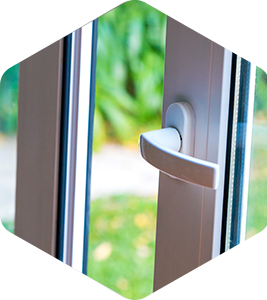Recycling of glass windows and doors
How s'organizee How is the glazed joinery industry organized?
A commitment to green growth (ECV) was signed in 2017 between industry and waste management professionals to improve the recycling of flat glass from the construction industry. The goal was to collect and sort 80,000 tons of flat glass by 2020, and to reintroduce 50% of this amount into flat glass manufacturing.
To be able to recycle flat glass in a short loop in a float furnace, it is preferable that the windows are collected with integrity and then dismantled, in order to guarantee the high quality level required for this type of furnace. The global capacity of dismantling at the national level is estimated between 30 and 40kt/year. The flows are mainly collected directly on rehabilitation or renovation sites, very few collection points accept today a flow of glass joineries in separate collection.

Some cullet processors are developing different approaches, with collection in skips, rough dismantling with grabs, followed by a sorting and control stage in units specially designed for industrial glass processing.
Currently, five plants in France have float furnaces dedicated to the production of flat glass. The other "non-float" glass furnaces (for the production of glass packaging or glass wool) also consume cullet from flat glass.
How to Valobat intervene?
The recycling of flat glass from window frames has a significant development potential, and the objective is to recycle it preferably in a short loop, in the production of float furnaces for the building sector.
For this VALOBAT proposes :
- The implementation of the collection of end-of-life woodwork on the various collection points constituting the network at the national level (public and professional waste collection centers and distributors' sites) and the construction sites,
- The development of a collection in return logistics by professional installers on renovation sites,
- Support for the creation of new dismantling sites.
- Monitoring and evaluation of the different preparation and recycling options, based either on dismantling or on the industrialization of sorting
- The integration in the Valobat system of the initiatives already implemented by the manufacturers, in order to perpetuate the existing recycling programs.


